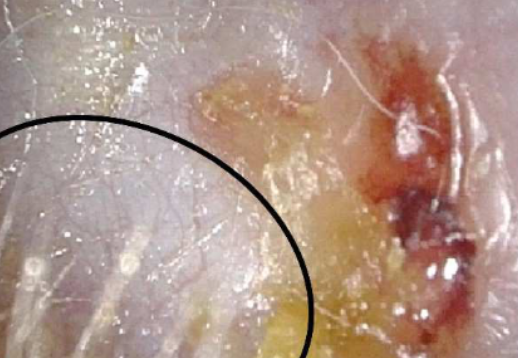Acquired atresia of the external auditory canal and canaloplasty with Thiersch graft reconstruction: Outcomes and complications
DOI:
https://doi.org/10.17305/bjbms.2022.7676Keywords:
acquired atresia, external auditory canal, endoaural surgery, canaloplasty, skin graftAbstract
Acquired atresia of the external auditory canal (EAC) is a rare disease characterized by otorrhea and progressive hearing loss. Clinically, it is differentiated into two stages: the wet stage and the dry stage. The dry stage does not respond to pharmacological treatment and has to be treated surgically. One surgical option is canaloplasty of the EAC with Thiersch graft reconstruction. This study aimed to report the follow-up outcomes (otomicroscopic signs and pure tone audiometry [PTA]) in patients with acquired atresia treated with this technique. Eighteen adult patients surgically treated for acquired atresia of the EAC between 2010 and 2020 were enrolled. All underwent canaloplasty with Thiersch graft reconstruction by one senior surgeon. Otomicroscopy and PTA results were evaluated before and after surgery. Postsurgical follow-up was performed at 1-3-6-12 months and then annually. Presurgical otomicroscopic examination revealed stenosis that occluded more than 75% of the EAC in all patients, and preoperative PTA showed conductive hearing loss in 89% of patients. However, postsurgical otomicroscopic examination showed that 94% of patients had a normal EAC diameter after one year, and only one patient had anterior blunting and recurrent atresia. In addition, postsurgical PTA evidenced a normal range in 89% of patients after one year. In conclusion, acquired atresia of the EAC is a troublesome disease usually associated with hearing loss. Therefore, treatment is chosen to resolve its symptoms. The results demonstrate evidence that canaloplasty with Thirsch graft may be a suitable surgical method considering the lower incidence of recurrence and the excellent hearing outcomes.
Citations
Downloads

Downloads
Additional Files
Published
Issue
Section
Categories
License
Copyright (c) 2022 Annalisa Pace, Valeria Rossetti, Giannicola Iannella, Irene Claudia Visconti, Alessandro Milani, Roberta Polimeni, Antonino Maniaci, Salvatore Cocuzza, Massimo Re, Giuseppe Magliulo

This work is licensed under a Creative Commons Attribution 4.0 International License.
How to Cite
Accepted 2022-07-07
Published 2023-01-06









